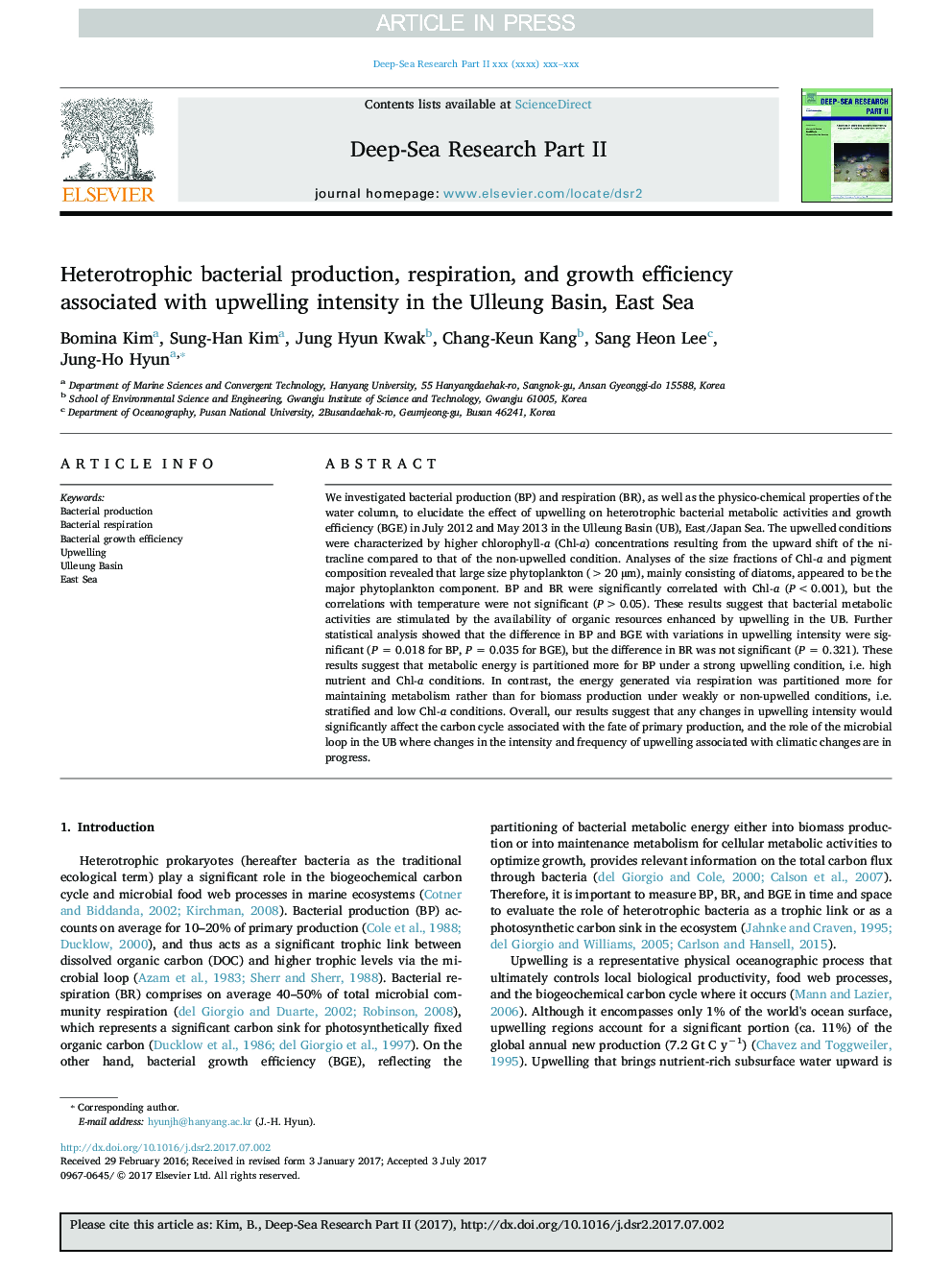| کد مقاله | کد نشریه | سال انتشار | مقاله انگلیسی | نسخه تمام متن |
|---|---|---|---|---|
| 5764783 | 1626399 | 2017 | 12 صفحه PDF | دانلود رایگان |
عنوان انگلیسی مقاله ISI
Heterotrophic bacterial production, respiration, and growth efficiency associated with upwelling intensity in the Ulleung Basin, East Sea
دانلود مقاله + سفارش ترجمه
دانلود مقاله ISI انگلیسی
رایگان برای ایرانیان
کلمات کلیدی
موضوعات مرتبط
مهندسی و علوم پایه
علوم زمین و سیارات
زمین شناسی
پیش نمایش صفحه اول مقاله

چکیده انگلیسی
We investigated bacterial production (BP) and respiration (BR), as well as the physico-chemical properties of the water column, to elucidate the effect of upwelling on heterotrophic bacterial metabolic activities and growth efficiency (BGE) in July 2012 and May 2013 in the Ulleung Basin (UB), East/Japan Sea. The upwelled conditions were characterized by higher chlorophyll-a (Chl-a) concentrations resulting from the upward shift of the nitracline compared to that of the non-upwelled condition. Analyses of the size fractions of Chl-a and pigment composition revealed that large size phytoplankton (> 20 µm), mainly consisting of diatoms, appeared to be the major phytoplankton component. BP and BR were significantly correlated with Chl-a (P < 0.001), but the correlations with temperature were not significant (P > 0.05). These results suggest that bacterial metabolic activities are stimulated by the availability of organic resources enhanced by upwelling in the UB. Further statistical analysis showed that the difference in BP and BGE with variations in upwelling intensity were significant (P = 0.018 for BP, P = 0.035 for BGE), but the difference in BR was not significant (P = 0.321). These results suggest that metabolic energy is partitioned more for BP under a strong upwelling condition, i.e. high nutrient and Chl-a conditions. In contrast, the energy generated via respiration was partitioned more for maintaining metabolism rather than for biomass production under weakly or non-upwelled conditions, i.e. stratified and low Chl-a conditions. Overall, our results suggest that any changes in upwelling intensity would significantly affect the carbon cycle associated with the fate of primary production, and the role of the microbial loop in the UB where changes in the intensity and frequency of upwelling associated with climatic changes are in progress.
ناشر
Database: Elsevier - ScienceDirect (ساینس دایرکت)
Journal: Deep Sea Research Part II: Topical Studies in Oceanography - Volume 143, September 2017, Pages 24-35
Journal: Deep Sea Research Part II: Topical Studies in Oceanography - Volume 143, September 2017, Pages 24-35
نویسندگان
Bomina Kim, Sung-Han Kim, Jung Hyun Kwak, Chang-Keun Kang, Sang Heon Lee, Jung-Ho Hyun,